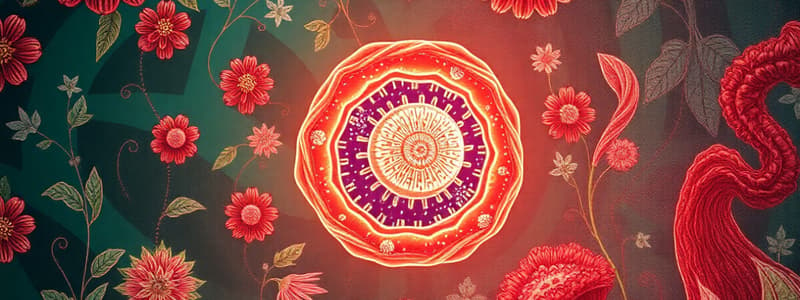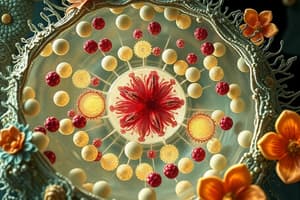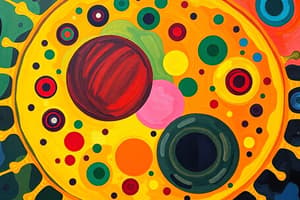Podcast
Questions and Answers
What is a key difference between plant and animal cells?
What is a key difference between plant and animal cells?
- Animal cells have chloroplasts
- Both have a flagella
- Both have multiple nuclei
- Plant cells have a cell wall (correct)
Animal cells contain chloroplasts similar to plant cells.
Animal cells contain chloroplasts similar to plant cells.
False (B)
Name one function of the ribosomes found in both plant and animal cells.
Name one function of the ribosomes found in both plant and animal cells.
Protein synthesis
Animal cells usually have __________ small vacuoles, while mature plant cells may have only one large vacuole.
Animal cells usually have __________ small vacuoles, while mature plant cells may have only one large vacuole.
Match the following cell components with their primary function:
Match the following cell components with their primary function:
Flashcards
Cell Wall (Plant)
Cell Wall (Plant)
A rigid outer layer that provides structure and support to plant cells.
Chloroplasts (Plant)
Chloroplasts (Plant)
Organelles that convert light energy into chemical energy through photosynthesis.
Vacuole (Plant)
Vacuole (Plant)
A large, fluid-filled sac that stores water, nutrients, and waste products in plant cells.
Plant vs Animal: Energy Production
Plant vs Animal: Energy Production
Signup and view all the flashcards
Plant vs Animal: Vacuoles
Plant vs Animal: Vacuoles
Signup and view all the flashcards
What is the function of the cell wall in plant cells?
What is the function of the cell wall in plant cells?
Signup and view all the flashcards
What is the function of the vacuole in a plant cell?
What is the function of the vacuole in a plant cell?
Signup and view all the flashcards
What is the function of the chloroplast in a plant cell?
What is the function of the chloroplast in a plant cell?
Signup and view all the flashcards
What is the function of the endoplasmic reticulum?
What is the function of the endoplasmic reticulum?
Signup and view all the flashcards
What is the function of the Golgi apparatus?
What is the function of the Golgi apparatus?
Signup and view all the flashcards
Study Notes
Plant Cell vs Animal Cell
- Plant cells have cell walls, providing structure, unlike animal cells.
- Plant cells have chloroplasts for photosynthesis, animal cells do not.
- Animal cells usually have many small vacuoles, while mature plant cells often have one large central vacuole.
- Plant cells almost always have only one nucleus, while some large animal cells may have more than one.
- Both plant and animal cells have cell membranes enclosing the cell contents.
- Both have cytoplasm, a jelly-like substance with essential cell chemicals.
- Both contain a nucleus, housing DNA.
- Both contain mitochondria, using oxygen to break down food, releasing energy.
- Both have vacuoles that hold food, water, or waste.
- Both have endoplasmic reticulum, a transport system for proteins.
- Both have Golgi bodies for distributing proteins outside of cells.
- Both have ribosomes, which build proteins.
- Animal cells have lysosomes, plant cells do not.
- Animal cells use mitochondria primarily for energy production, while plants use chloroplasts.
- Golgi vesicles are components of the Golgi apparatus.
- Ribosomes, rough endoplasmic reticulum, smooth endoplasmic reticulum, nucleolus, nucleus, cell (plasma) membrane, cytoplasm, centrioles, lysosomes are components of animal cells.
- Cell wall, cell membrane, Golgi apparatus, chloroplast, vacuole membrane, raphide crystal, druse crystal, mitochondrion are components of plant cells.
- Plant cells contain amyloplast (starch grain)
Studying That Suits You
Use AI to generate personalized quizzes and flashcards to suit your learning preferences.




